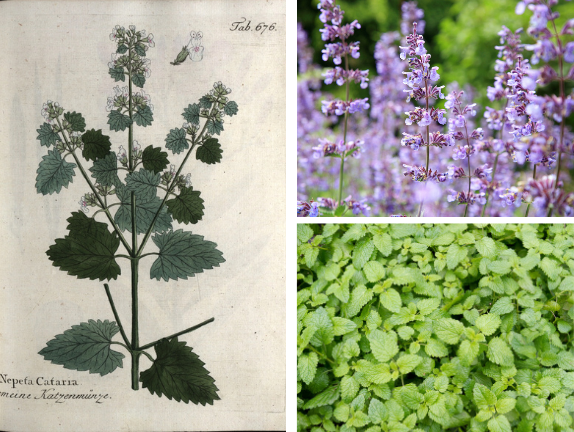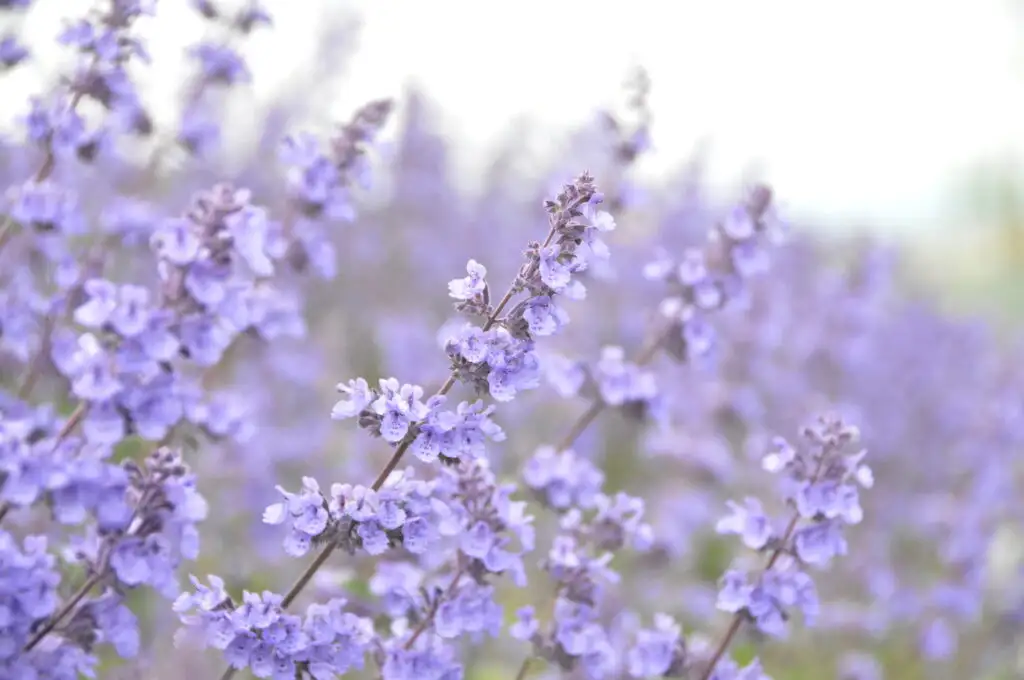Nepata cataria
Latin Name: Nepata cataria
Herb Class/Action: digestive, nervine, astringent, carminative, bitter
Parts Used: leaves, flowering tops
Flavors: aromatic, pungent, bitter, a hint of acridity
Energetics: cooling/warming, resinous + drying/moistening
Traditional Benefits: digestive support, immune support, mood support, supports a healthy inflammatory response, supports healthy blood flow, supports healthy healing, supports sleep, stress support
Like a cat with many lives, this playful yet soothing herb has more than one use case. The herb that makes cats go wild is actually a beautifully harmonizing, gentle herb for human health that supports digestion, mood, and a specific type of internalized tension that can’t always be put into words for the external world to understand.*
An herb in the mint family, Catnip is most commonly grown and then dried as a treat for cats. With uses dating back to ancient times, catnip is your feral best friend that can help you with (almost) anything in your herbalist toolkit. A cup of Catnip tea is a beautiful choice for a before bedtime routine to soothe a troubled mind or to help you unwind after a demanding day. This bitter, aromatic herb is native to Europe and Asia and has been grown for centuries for both culinary and therapeutic purposes. Possessing an almost citrusy flavor profile, catnip’s leaves and flowering tops can be consumed fresh or dried, by both humans and felines.
Ironically, while Catnip is known to excite and stimulate cats, it’s a gentle, calming, and nurturing herb for humans. Catnip is known as a harmonizing herb—shown to have cooling or warming energetics, as well as drying or moistening. So even though it’s generally relaxing and calming, it can also be stimulating, helping to focus one’s energy and balance the mind, body, and spirit.

Why is Catnip so special? This nutrient-rich herb contains B vitamins, carotenes, monoterpenoids, phosphorus, and tannins—among other components. Historically, it’s been said to aid in healthy menstruation and support optimal lymphatic function. Two of our favorite systems to talk about!
In modern herbalism, Catnip is recognized as a circulatory supporter—helping to harmonize healthy blood flow. In the physical realm Catnip supports optimal digestion and a healthy inflammatory response within the gut… and has even been shown to support the body’s natural response to stressors both physical and mental. Most commonly, though, catnip is consumed for mood- and stress-related concerns. It’s said to help on the emotional level by supporting those who have not yet learned how to self soothe, and who cannot exactly put into words the kind of tension they’re experiencing for the outside world to understand.
When we look at both the physical and emotional representations of nervousness, stress, or general unease, we turn to Catnip as a natural ally for the mind, body, and soul.
“Use chamomile for those crying on the outside and catnip for those crying on the inside” – Claudia Keel

